- Home
- Raymond Benson
Blues in the Dark
Blues in the Dark Read online
ALSO BY THE AUTHOR
Novels
Evil Hours
Face Blind
Tom Clancy’s Splinter Cell (as “David Michaels”)
Tom Clancy’s Splinter Cell—Operation Barracuda (as “David Michaels”)
Sweetie’s Diamonds
A Hard Day’s Death
Metal Gear Solid (based on the video game)
Dark Side of the Morgue
Metal Gear Solid 2—Sons of Liberty (based on the video game)
Hunt Through Napoleon’s Web (as “Gabriel Hunt”)
Homefront—the Voice of Freedom (cowritten with John Milius)
Artifact of Evil
Torment—A Love Story
Hitman: Damnation (based on the video game series)
Dying Light—Nightmare Row (based on the vide ogame series)
The Secrets on Chicory Lane
In the Hush of the Night
The Black Stiletto Saga
The Black Stiletto
The Black Stiletto: Black & White
The Black Stiletto: Stars & Stripes
The Black Stiletto: Secrets & Lies
The Black Stiletto: Endings & Beginnings
The Black Stiletto: The Complete Saga (anthology)
James Bond Novels
Zero Minus Ten
Tomorrow Never Dies (based on the screenplay)
The Facts of Death
High Time to Kill
The World is Not Enough (based on the screenplay)
DoubleShot
Never Dream of Dying
The Man with the Red Tattoo
Die Another Day (based on the screenplay)
The Union Trilogy (anthology)
Choice of Weapons (anthology)
Nonfiction and Miscellany
The James Bond Bedside Companion
Jethro Tull—Pocket Essential
Thrillers—100 Must-Reads (contributor)
Tied-In: The Business, History, and Craft of Media Tie-In Writing (contributor)
Mystery Writers of America presents Ice Cold—Tales of Intrigue from the Cold War (coeditor, contributor)
12+1: Twelve Thrillers and a Play (anthology)
Copyright © 2019 by Raymond Benson
All rights reserved. No part of this book may be reproduced in any manner without the express written consent of the publisher, except in the case of brief excerpts in critical reviews or articles. All inquiries should be addressed to Arcade Publishing, 307 West 36th Street, 11th Floor, New York, NY 10018.
Arcade Publishing books may be purchased in bulk at special discounts for sales promotion, corporate gifts, fund-raising, or educational purposes. Special editions can also be created to specifications. For details, contact the Special Sales Department, Arcade Publishing, 307 West 36th Street, 11th Floor, New York, NY 10018 or [email protected].
Arcade Publishing® and CrimeWise® are registered trademarks of Skyhorse Publishing, Inc.®, a Delaware corporation.
Visit our website at www.arcadepub.com.
10 9 8 7 6 5 4 3 2 1
Library of Congress Cataloging-in-Publication Data is available on file. Library of Congress Control Number: 2019944897
Cover design by Erin Seaward-Hiatt
Jacket photography: © Johan63/Getty Images (piano player); © Vladimir Gappov/Getty Images (woman with pistol); © LPETTET/Getty Images (cityscape); © Kesu01/Getty Images (light)
Print ISBN: 978-1-948924-91-7
Ebook ISBN: 978-1-948924-92-4
Printed in the United States of America
FOR MY FAMILY
Contents
Acknowledgments
Author’s Note
1 The Movie
2 Karissa
3 The Movie
4 Karissa
5 The Movie
6 Karissa
7 The Movie
8 Karissa
9 The Movie
10 Karissa
11 The Movie
12 Karissa
13 The Movie
14 Karissa
15 The Movie
16 Karissa
17 The Movie
18 Karissa
19 The Movie
20 Karissa
21 The Movie
22 Karissa
23 The Movie
24 Karissa
25 The Movie
26 Karissa
27 The Movie
28 Karissa
29 The Movie
30 Karissa
31 The Movie
32 Karissa
33 The Movie
34 Karissa
35 The Movie
36 Karissa
37 The Movie
38 Karissa
39 The Movie
40 Karissa
41 The Movie
42 Karissa
43 The Movie
44 Karissa and the Movie
45 Karissa and the Movie
About the Author
ACKNOWLEDGMENTS
The author wishes to thank the following individuals: (alphabetically) Rebecca Arends; Gil Bartal; J. H. Bográn; Elizabeth Fuller and Julie Grist of Larchmont Buzz; Will Graham; Nancy Johnson; Shannon Luders-Manuel; Josh MacNeal; Edgar Mariscal and the Dunbar Hotel; Laura Meyers and the West Adams Heritage Association; Jacki Morie of the West Adams Heights Sugar Hill Neighborhood Association; the Vernon Healthcare Center; Cy Weisman; and Jeffrey G. Weiss & David Bailey.
Special continuing thanks goes to Cynthia Manson, and to my team at Skyhorse Publishing—Herman Graf, Kim Lim, and Johanna Dickson. Finally, my love and appreciation go to my wife Randi and son Max for their help and support.
AUTHOR’S NOTE
Of course, this is a work of fiction. The character of Blair Kendrick didn’t exist. The studio, Ultimate Pictures, is totally imaginary, as are its personages. The organized crime activities of Meyer Lansky are well documented, especially in Las Vegas, but his function as a movie studio investor is purely my invention. Likewise, my use of James Cagney as a costar for Blair Kendrick is also fictional, although he did make the film noir “comeback” gangster picture, White Heat, as mentioned in this novel. The “Wasco (California) Bass Player Farm” is another invented locale, as is “Our Lady of Hope Children’s Home.”
My descriptions of the neighborhoods of Los Angeles’s West Adams Heights—“Sugar Hill”—are correct, although I have played fast and loose with placement of houses that are locations in the story. Karissa’s home on S. Harvard Boulevard and Hank’s dwelling on S. Hobart Boulevard are mish-moshes of mansions I explored there and are not real places. My depiction of the Dunbar Hotel and S. Central Avenue in the 1940s is as precise as could be achieved through in-person research and what could be gleaned from old photographs.
The bulk of this book was written primarily over the summer of 2017. The inspiration was a newspaper clipping that my now-ninety-eight-year-old mother had sent to me about new occupants of an old house doing renovations and uncovering a human skeleton in the walls. That got me thinking about secret histories of old dwellings. As a film historian and instructor, I am also rabidly interested in Hollywood and its evolution. The late 1940s period especially attracted me, for I’m a huge fan of films noir and am fascinated by the movement’s traits of characters’ motivations dictated by fate and destiny, the femmes fatales, and the often convoluted crime plots. Setting the tale in classic and contemporary Hollywood was a path that naturally worked for me.
Contributing to my formulation of the narrative were current events of that year. Racism and sexual harassment were significant parts of the national conversation, as they’ve always been in our history, and I was compelled to tell a story that addressed both as humbly and honestly as I could.
&nbs
p; —R. B.
March 2019
1
THE MOVIE
The Present, 2020
The house lights dim to darkness and the advance press screening of the movie begins with the obligatory studio and production company logos.
Typical of most industry viewings, members in the audience who work at the organizations applaud when theirs is displayed.
It is immediately striking that, unlike most pictures made today, this one is not presented in a widescreen format. All movies made prior to 1953 were framed in the old aspect ratio that was more of a boxlike 4:3 rectangle, and the advent of anamorphic widescreen technology in the fifties changed all that, mainly because the studios wanted to combat the proliferation of television sets in the homes of potential ticket-buying audience members.
Another shock is that the new picture is in black and white.
The filmmakers are taking a huge risk in presenting such a throwback, retro picture for today’s public.
Orchestral music on the soundtrack blares with a sassy, seductive theme that cries out: film noir.
If you didn’t know better, you’d think you are really watching something that had been made in 1948. The crime pictures Hollywood churned out between roughly 1941 and 1958 fell under a stylistic umbrella that French critics later dubbed film noir because they were unusually “dark” in subject matter and tone. They were made cheaply, often by a director of Eastern European extraction, in startling black and white. Night scenes. Rain. Lots of smoking and drinking. Hard-boiled detectives. Bad girls whom the French critics later labeled femmes fatales. Seedy bars and motel rooms. Double crosses. Violence. Witty dialogue full of innuendo. The Postman Always Rings Twice. The Big Sleep. Out of the Past. Double Indemnity.
This new film projected at the press screening is a modern film noir.
The screen fades to black, and the orchestral music continues to swell as the title appears:
FEMME FATALE—THE BLAIR KENDRICK STORY
The audience applauds again.
And then a title card proclaims:
THIS IS A TRUE STORY.
2
KARISSA
Several Months Earlier, 2019
She hadn’t expected to be thinking about murder that day, but within the hour that would be the case.
The anxiety of the previous night’s restless sleep was just beginning to wane as Karissa Glover parked her blue 2015 Nissan Murano at the curb on South Harvard Boulevard. She placed the coffee cup from Executive Suites in the holder and sighed. She had once read that if you were anxious and worried about things in the waking world, then that was fodder for the subconscious to act out. Worries about her divorce, her housing situation, and, most of all, a new project for her film production company were taking a toll.
Snap out of it! She could hear Marcello, her best friend and business partner at the office, order her to do so with humor and reassurance. It was just after eight in the morning on a sunny, fresh Los Angeles day, and she knew that if she simply focused on the tasks at hand, she’d feel just fine. She took a breath and summoned a more upbeat, professional attitude.
Karissa looked through the passenger window at the house—a mansion, really—across the street. It was much too large for her, but it didn’t appear as decrepit and in need of repairs as she had expected. Nevertheless, she needed a new home. She was sick and tired of renting a room at the Executive Suites. The divorce wouldn’t be final until that damned Willy signed the papers. Selling their house in Van Nuys had happened too quickly for her to make other arrangements. Starting over at the age of forty-six wasn’t pleasant.
How she’d come to be aware of the house on South Harvard Boulevard had been a lucky fluke. Two mornings ago, she’d gone into the Executive Suites lobby for the complimentary cup of coffee. Usually the place was sparsely populated at 8:30 a.m., but that day a few business types were there with the same idea. A striking woman in her thirties dressed in a sharp pantsuit stepped up behind her at the machine and said, “Please, Lord, caffeine!”
Karissa laughed and added, “It’s one of His small miracles.”
They stood at the amenities counter, doctoring their respective coffee cups with cream, and the woman asked, “Are you from out of town?”
“No, I live in LA,” Karissa answered. “I’m house-hunting right now. This is just temporary.”
“Ah. I hear you. It was only one night for me. Realtors’ convention. I’ll be out of here this morning. What are you looking for? Maybe I can help. I need to leave soon, but do you have time to sit for a minute?”
“Sure.” They went to one of the few vacant tables.
“I’m Serena, by the way,” the woman said.
“Karissa.” They shook hands. “I work in Hollywood, so I’m looking for something that doesn’t have an outrageous commute.”
“You in the movie business?”
“I’m a film producer.”
Serena raised her eyebrows. “Ah. Do I have a tip for you! Do you know West Adams Heights?”
“I know where it is.”
“I just heard about an old house there—a gorgeous mansion—that’s about to go on the market. I think you could get it for a song and beat the rush if you act quickly. It’s just down the street from where Hattie McDaniel lived back in the forties. You know who I mean?”
Karissa smiled. “Sure. A lot of the black celebrities lived in that area in those days.”
“Uh huh. Well, it’s pretty much a melting pot now. You’ll find all the options on the census form under ‘Race.’” She winked at Karissa and whispered with a smile, “You’d fit right in.”
Karissa was a little taken back by that remark, but she didn’t say anything. Had Serena, who was African American, made the comment from an intuitive observation? Karissa always felt that her biracial ethnicity wasn’t that obvious.
Serena dug into her purse and pulled out some listings on pieces of paper. She thumbed through them and found what she was looking for. “Here it is.” She took out a pen, grabbed one of the Executive Suites notepads that was on the counter within arm’s reach, and wrote down an address, phone number, and a name. She tore off the page and slid it across the table.
“Call the landlord, Mr. Trundy. I’m not representing the property, but you can tell him Serena told you about the house.” She looked at her watch. “Oh, my, sorry, but I have to run. It was great meeting you, Karissa, and good luck!” Serena stood and they shook hands a final time.
Then the woman had rushed out of the lobby. Karissa had felt regretful that she hadn’t asked Serena No-Last-Name for a card, but she was also bewildered and assuredly intrigued.
Now, after dutifully making an appointment with Trundy, Karissa sat in her car across the road from the house in question. It was a two-story Mediterranean Revival mansion, an architectural style popular in the 1920s and thirties that evoked the look of a seaside villa. Very formal and symmetrical, with a low-pitched hipped roof and broad, overhanging eaves. This one was once a sparkling white stucco, but now the exterior walls had browned and the paint was chipped and flaking in several places. The roof’s dark green shingles appeared to be sound enough, and the grounds were clean and manicured. Four big oak trees provided cover and shade over the lawn. While most of the mansions on the block had old but traditional wrought iron fences with gates surrounding the properties, this one didn’t. The front yard was wide open to the street. A paved walk led from the sidewalk to a flight of six stone steps that rose to a stucco porch and the front door. A short wall surrounded the porch. A driveway on the left curved around to a garage on the side of the building. There were, however, wrought iron bars on the windows, which she supposed provided some security.
Karissa thought the street was a little too close to the Santa Monica Freeway, which was just a little over a block to the north. However, it was indeed a beautiful neighborhood, stocked with fashionable large homes of the same ilk. She was aware that West Adams Heights, once popularly known a
s “Sugar Hill”—and still called that by locals—was, as she had acknowledged to Serena, an enclave populated by black celebrities in the 1940s and fifties until the area’s decline in the sixties when the construction of I-10 cut through the Heights and everything changed. Nevertheless, while it had been predominantly a neighborhood of African Americans, today the West Adams district was a hot, trendy locale of lively diversification.
Even Marcello had mentioned that Hattie McDaniel had lived on Harvard Boulevard when Karissa told him what she was going to do. McDaniel, the first African American to win an Oscar—as “Mammy” in Gone with the Wind—had owned a home just up the street from where Karissa was parked.
“And Louise Beavers, too,” Karissa had said to Marcello. Beavers, another popular black actress of the period, also owned a home around the block on South Hobart Boulevard. “So did Butterfly McQueen, Bill ‘Bojangles’ Robinson, Marvin Gaye, the Mills Brothers …”
In fact, lots of African American celebrities once lived in the different neighborhoods of the larger area known as West Adams. It had been one of the focal points of what was dubbed “Black Hollywood” in its day. Not anymore.
Ha! Maybe it is perfect for me! Karissa thought as she opened the car door and got out. She strode across the street, walking twenty feet to the stone steps. She climbed them and stood on the covered porch. To the left was an old wooden swing hanging from the stucco overhead. A tall potted plant with broad leaves stood to the right. A mail slot was built into the door.
Karissa raised a fist to knock, but the door opened before she could. A short black man who appeared to be in his sixties or seventies gave her a slight smile. He was dressed sharply, much like a Realtor hoping to make a sale.
“You must be Ms. Glover.”
“Yes. How do you do?”
They shook hands. “My name is James Trundy. Please come in.”
She stepped inside an expansive foyer that could have been frozen in time from the 1940s. Karissa wasn’t an expert on design styles, but she was certain that nothing she saw was more recent than the fifties. An empty, old-fashioned metal hat rack that towered near the door was right out of the art deco period. The worn hardwood floor was probably due for a refurbish. A small, vintage lounge sofa with red upholstery stood against the wall on the right.

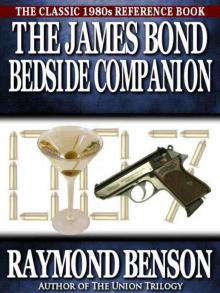 The James Bond Bedside Companion
The James Bond Bedside Companion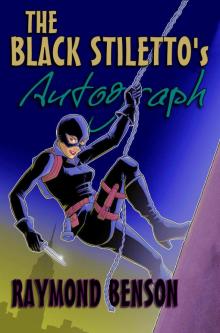 The Black Stiletto's Autograph
The Black Stiletto's Autograph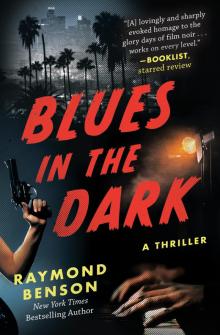 Blues in the Dark
Blues in the Dark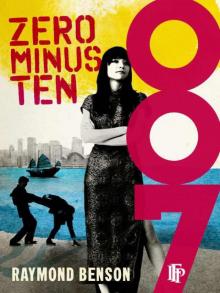 Zero Minus Ten
Zero Minus Ten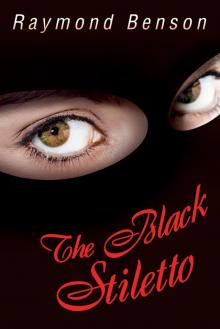 The Black Stiletto
The Black Stiletto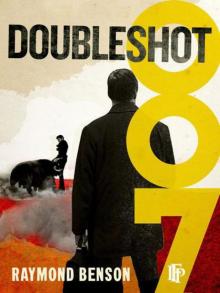 Doubleshot
Doubleshot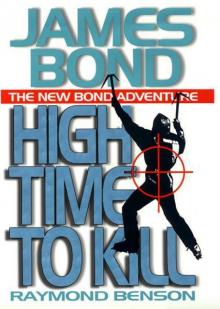 High Time To Kill rbb-3
High Time To Kill rbb-3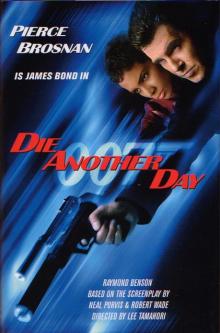 Bond Movies 07 - Die Another Day
Bond Movies 07 - Die Another Day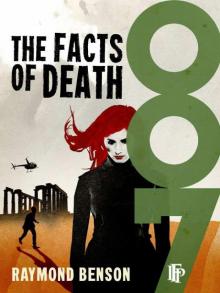 The Facts Of Death
The Facts Of Death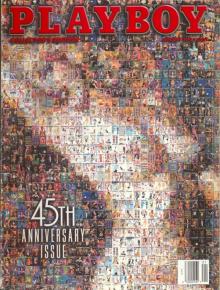 Midsummer Night's Doom
Midsummer Night's Doom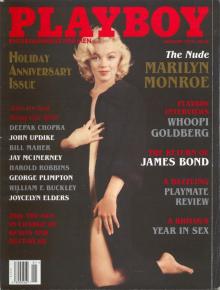 Blast from the Past
Blast from the Past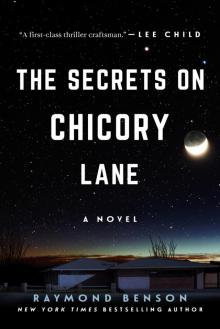 The Secrets on Chicory Lane
The Secrets on Chicory Lane High Time To Kill
High Time To Kill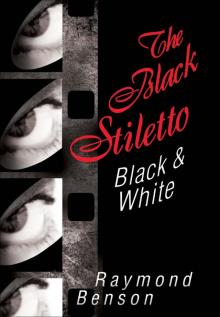 The Black Stiletto: Black & White
The Black Stiletto: Black & White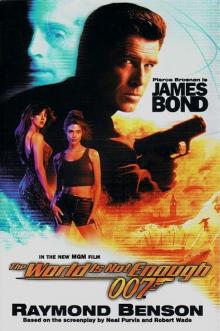 The World Is Not Enough jb-1
The World Is Not Enough jb-1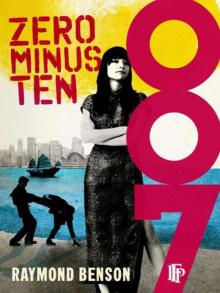 Zero Minus Ten rbb-1
Zero Minus Ten rbb-1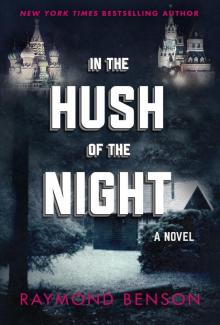 In the Hush of the Night
In the Hush of the Night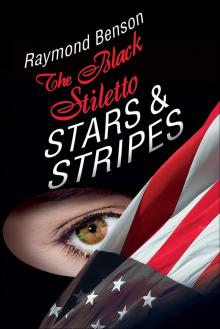 The Black Stiletto: Stars & Stripes
The Black Stiletto: Stars & Stripes Bond Movies 06 - The World Is Not Enough
Bond Movies 06 - The World Is Not Enough The Rock 'n Roll Detective's Greatest Hits - A Spike Berenger Anthology
The Rock 'n Roll Detective's Greatest Hits - A Spike Berenger Anthology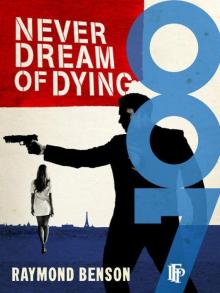 Never Dream Of Dying
Never Dream Of Dying